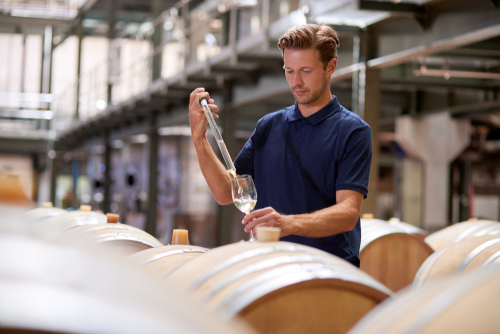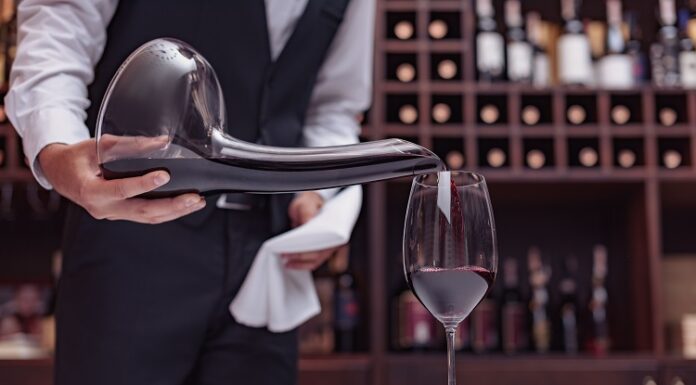A Step-by-Step Guide from Vineyard to Bottle
Wine might look like a pretty straightforward beverage — it’s just fermented grape juice. Still, things are a bit more complicated than that. It takes years to master making fine wine. Those who dedicate their lives to it follow meticulous processes to create the wine style they have in mind. This is our step-by-step guide to answering how wine is made. This is how wine is made for its three most popular styles, red, white and rosé.
Sure, technology makes making wine easier than ever. However, you’ll be surprised to know most of the techniques used to make wine haven’t changed in thousands of years!
The Work in the Vineyard
Most talented winemakers agree that wine is made in the vineyard, not in the cellar. The quality of the wine and its characteristics are determined by the climate. As well as the soil and weather conditions of the place where the grapes grow. Therefore, winemakers work around the calendar to ensure the grapevines are in good health and their fruit is perfect.
From pruning the vines in winter and fixing the trellises to fertilizing the soils and supervising the grapes as they ripen, the work in the vineyard really gives the wine its personality. You can’t make good wine without good grapes.
The Harvest
Our journey, though, starts at harvest. Grape growers and winemakers can harvest the grapes manually or mechanically and carry them in small baskets or large crates. Every decision determines the wine’s quality, so the fruit must be well-taken care of.
Once the grapes are picked, they’re taken to the winery. Fruits are sorted either manually in sorting tables or with optical sorting machines. Once the fruit is ready, it’s time to make some choices. Here’s where red, white and rosé winemaking processes differ. Let’s start with how white wine is made.
White Wine Production
To make white wine, producers crush and de-stem the grapes and send them to a press. Pneumatic presses are now the norm. However, traditional winemakers might still use vertical presses to separate the sweet grape juice from the skins, seeds and stems.
Once the juice is separated, winemakers allow it to settle in a tank to encourage the larger particles to precipitate. The remaining clear liquid goes straight to the fermentation tank.
No matter the type of wine made, adding sulfide dioxide AKA SO2 or sulfites, is typical throughout the winemaking process. The natural compound is an antioxidant and a sanitizer that keeps the grape juice and then the wine safe from oxidation and foreign microorganisms. Adding little to no sulfites during the process is currently a trend that results in interesting yet less predictable and shelf-stable wines.
Fermentation of White Wine
Once the clear juice is ready for fermentation, producers can choose to ferment it in temperature-controlled stainless-steel tanks or, rarely, in oak barrels. Fermentation occurs either by allowing ambient yeast (present all around us) to turn the juice into wine or by using commercial yeast, which might result in more consistent and predictable results.
White wine fermentation takes place in a few days, depending on the temperature and the type of yeast used. After fermentation, producers might allow a second natural biochemical transformation, the Malo-lactic fermentation. Lactic bacteria turn some of the harsh malic acids in the wine into milder lactic acid, adding buttery scents to the wine.
Producers might also allow the wine to spend time with the dead yeast or lees after fermentation. This “sur lie” aging affects the wine’s aroma, flavor and texture since, even if the yeast cells are dead, they still contain enzymes that can change the wine through autolysis.
Aging White Wine
Most white wine today never sees the inside of an oak barrel; it is fruit-forward and crisp and shows the grape’s personality better. Modern un-oaked white wine has become the norm.
Some white wine styles, often made with grapes like Chardonnay, can age for a few months in a barrel. Oak barrels change the wine’s color and texture through slow oxidation while tainting it with the wood’s natural aromatic compounds. White wine aged in oak is usually more complex and age-worthy, and since barrels are expensive, the wine can also be pricier.
The Final Steps
Whether the white wine is aged in oak or not, it often undergoes several optional procedures that make it more transparent and pleasing. Cold stabilizing the wine by lowering its temperature dramatically causes the excess tartaric acid to precipitate in the form of crystals. Winemakers can also clarify the wine with fining agents to remove any remaining fluttering particles.
Finally, white wine can be filtered and blended with other batches before bottling. In rare cases, producers might also want to age the wine in their dark cellars after being bottled, only to release it into the market when they feel it is ready.
Red Wine Production
Let’s see how red wine is made. Red wine is more laborious to make compared to white wine. Once the grapes arrive at the cellar, they’re sorted as usual. Then, winemakers can de-stem the grapes, leave them as whole bunches or both, combining pure fruit and grape bunches.
The grapes are then crushed and de-stemmed. Contrary to what happens in white wine production, the grape skins, seeds and stems are not discarded but sent along with the grape juice to the fermentation tank.

Fermentation of Red Wine
In the case of red wine, producers prefer open vertical vats over closed stainless-steel tanks since the winemaking team must ensure the grape juice extracts color, tannins and flavor compounds from the solids. Punching down the “cap” or the solids that naturally float in the fermenting wine or pumping the wine over the skins are typical ways of ensuring extraction.
The secret here is extracting color, flavor and texture from the skins without overdoing it. At the same time, ambient or commercial yeast turns the grape juice’s sugar into alcohol. All red wines experience the Malo-lactic fermentation, which rounds their texture while adding aromas to their bouquet.
Aging Red Wine
Most fine red wine spends anywhere from a few months to a few years in oak barrels. Red wine gains complexity from the wood vessel, and only the youngest, most approachable red wines don’t spend at least a few months in a barrel.
Small barrels have a more significant influence than large ones, and the same can be said about new barrels versus old ones. The time spent in the barrel, the type of wood used to make the barrels and the size of the barrels are all up to the winemaker. These decisions will help give the wine the desired flavor and aromatic profile.
The Final Steps
Although non-interventionist winemakers bottle the wine straight from the barrel, it is typical to clarify it with fining agents, filter it and blend it with other batches of the same vintage, even with wine made with other grapes to create blends.
The wine is then ready to be bottled, but it can still spend anywhere from a few months to a few years in the winery’s cellar before being released. Decisions throughout the process are entirely up to the winemaker. Still, traditionalist wine regions, mainly in the old world, might dictate production rules winemakers must follow, which may include maturation time in barrel and bottle.

Rosé Production
Rosé is a unique wine style that borrows plays from red and white winemaking playbooks. All rosé is made with red grapes, with few exceptions (such as Champagne.) This means the wine gains its pink or salmon color from the fruit’s black skins.
Once the grapes arrive at the winery, they’re crushed and de-stemmed, and the winemaker allows the juice and the skins to macerate for a few hours. Inevitably, the liquid is soon separated from the grape skins, now tainted pink, and is treated as white wine.
Most rosé ferments in temperature-controlled stainless-steel tanks and goes through the same steps as white wine. Oak-aged rosé is rare, but it exists. Needless to say, most rosé has the same texture, acidity and mouthfeel as white wine, but it has red fruit aromas, which make it irresistible.
Not All Wine Is Created Equal
As you see, not all wine is created equal. Even if all wine is made with grapes and ferments similarly, the different processes result in entirely different products. Wine is noble like that — no two bottles are the same.
Red wine might be the most complicated wine style since working with the grape skins, stems and seeds while fermenting that sweet ruby-red grape juice is no easy feat. Still, white wine and rosé are all about caring for every detail. The goal, despite the wine style, is to provide the wine drinker with a balanced beverage that brings endless satisfaction.








